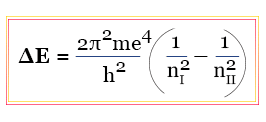
- Web server os market share software#
- Web server os market share free#
- Web server os market share windows#
Web server os market share software#
Let’s compare NGINX vs Apache in terms of basic architecture and how both software handle connections. It’s one of the essential criteria to consider when choosing a web server. Web server architecture is the logical layout or mechanism determining how a web server handles web requests, connections, and traffic. Basic Architecture – Handling Connections Now that we’ve gone over the basics of Apache and NGINX, it’s time to compare them using several critical aspects important to web servers.
Web server os market share windows#
However, installing NGINX on Windows might result in some performance limitations, like a lack of scalability and UDP authentication problems. NGINX supports almost all Unix-like operating systems.

Moreover, it can function as a reverse proxy, ensuring smooth traffic flow between servers and clients.

Plus, it’s excellent at serving static files quickly.Īside from being used as a web server, NGINX can also be utilized as a load balancer to improve a server’s resource efficiency and availability. The web server is especially popular due to its ability to grow and increase traffic and be easy to scale on minimal hardware. NGINX was released with an asynchronous and event-driven architecture, allowing many requests to process simultaneously. Back then, many web servers were not able to handle more than 10,000 connections simultaneously. Igor Sysoev, the creator of NGINX, started developing this software in 2002 to answer the C10K problem.
Web server os market share free#
Much like Apache, NGINX is open-source and free to use. It’s also one of the fastest-growing web servers in the industry, having reached the number two position in market share. NGINX – pronounced as “ Engine X ” – is one of the most reliable servers for scalability and speed. With Apache’s modules, users can easily add or remove functions, modifying their server to meet their needs. As a result, the web server also works well with many content management systems (CMS), programming languages, and web frameworks.Īpache is particularly popular due to the power and flexibility that come from its module system. What’s more, the Apache web server is also part of the LAMP stack, one of the first open-source software stacks for web development. The Apache web server supports many operating systems (OS) such as Microsoft Windows, OpenVMS, and any Unix-like OS like Linux and macOS. It was also the dominant web server on the early world wide web.Īpache HTTP Server currently powers around 33.9% of websites worldwide and holds the number one position in market share as one of the oldest web servers. It processes client requests and serves web content via Hypertext Transfer Protocol (HTTP).Īpache was released in 1995 and has been since maintained by the Apache Software Foundation. The Apache HTTP Server – commonly referred to as Apache or Apache HTTPD – is free, open-source web server software. Directory-Level Configuration for NGINX and Apacheīefore we start comparing Apache vs NGINX, let’s explore the differences between web servers and their general characteristics.Performance Comparison – Static vs Dynamic Content.

Basic Architecture – Handling Connections.


 0 kommentar(er)
0 kommentar(er)
